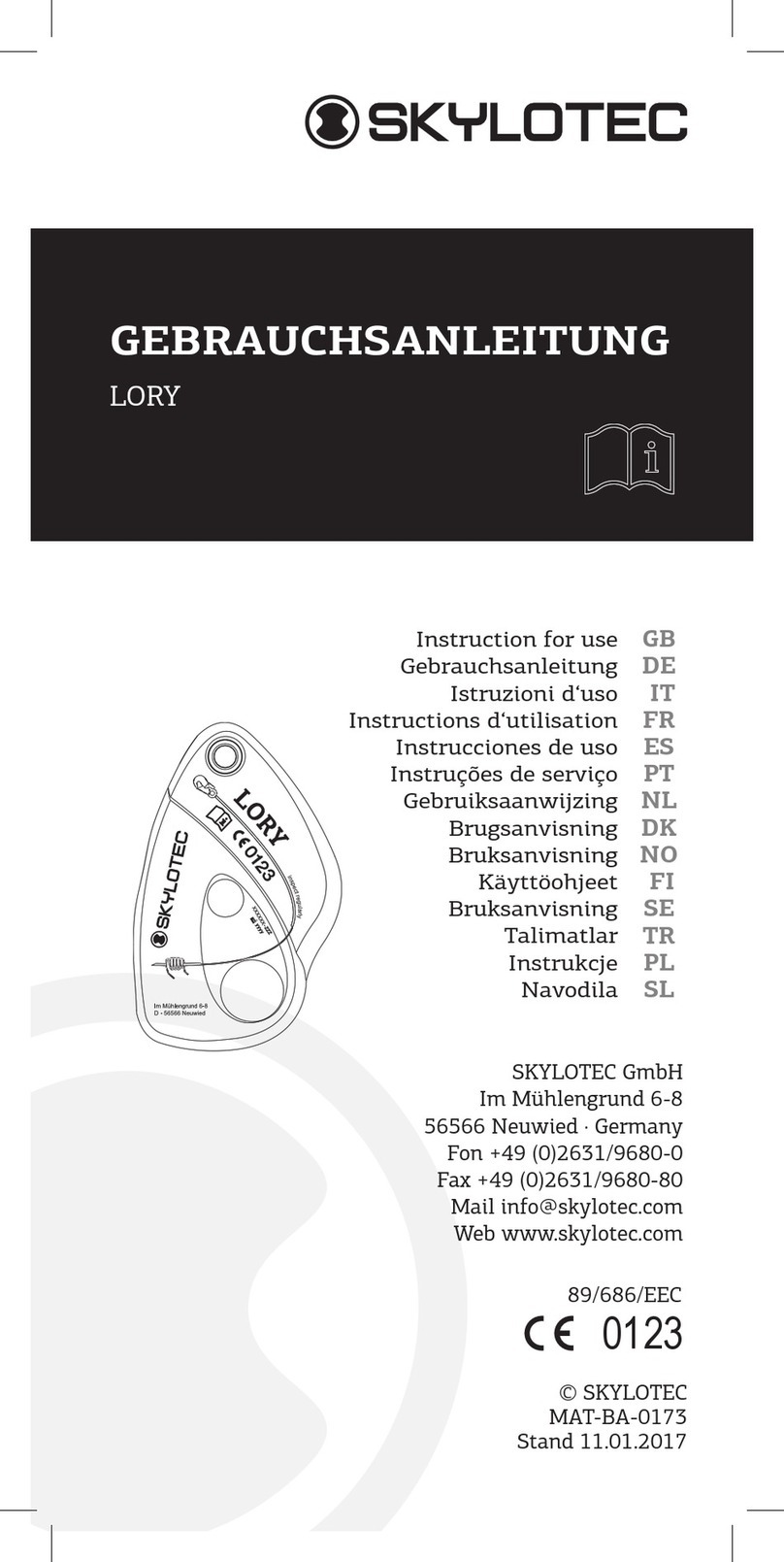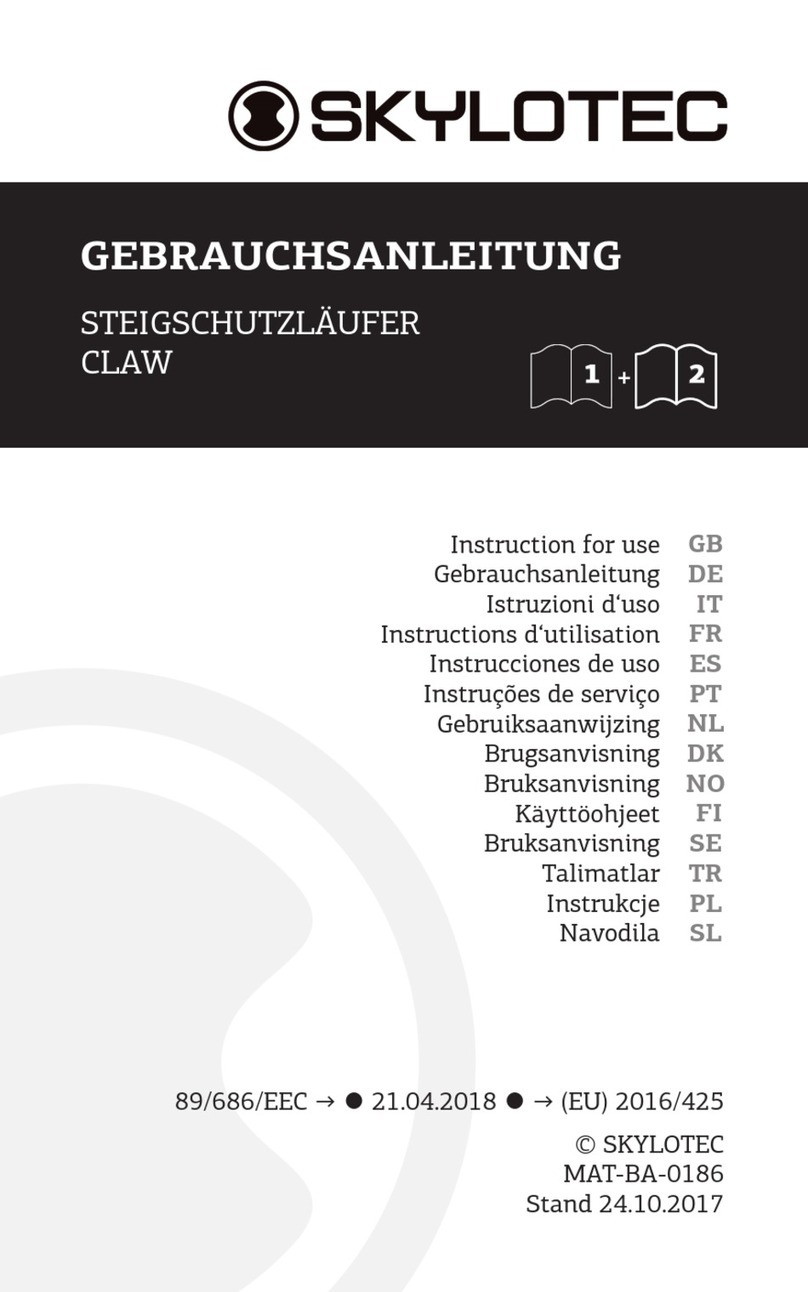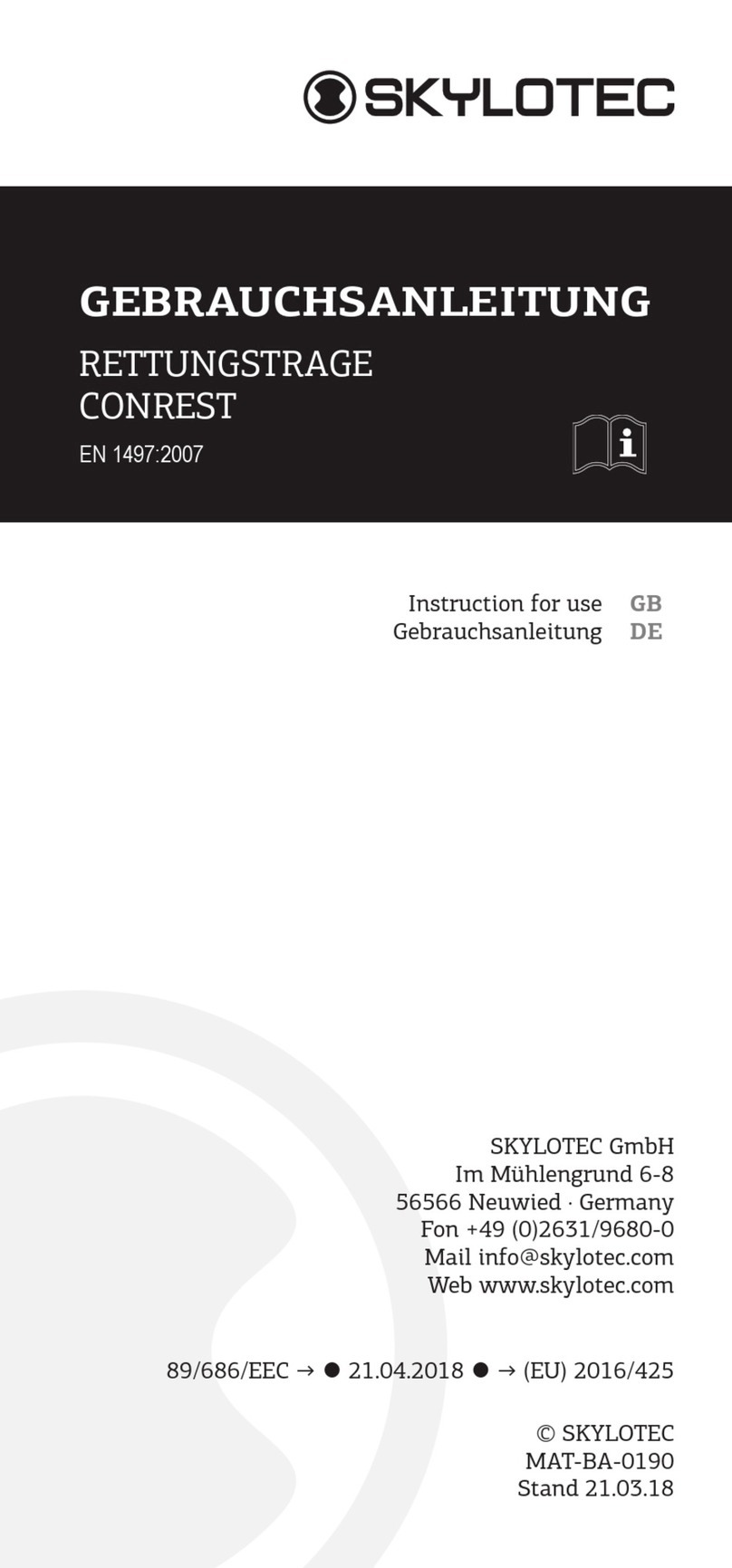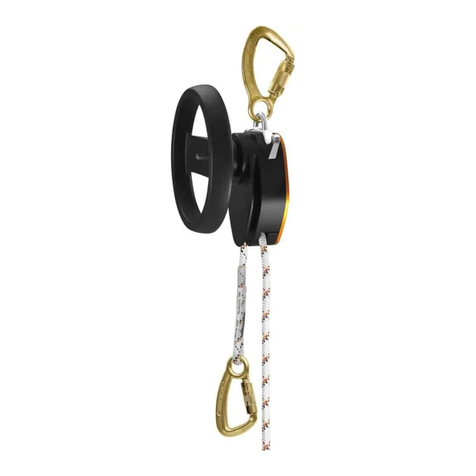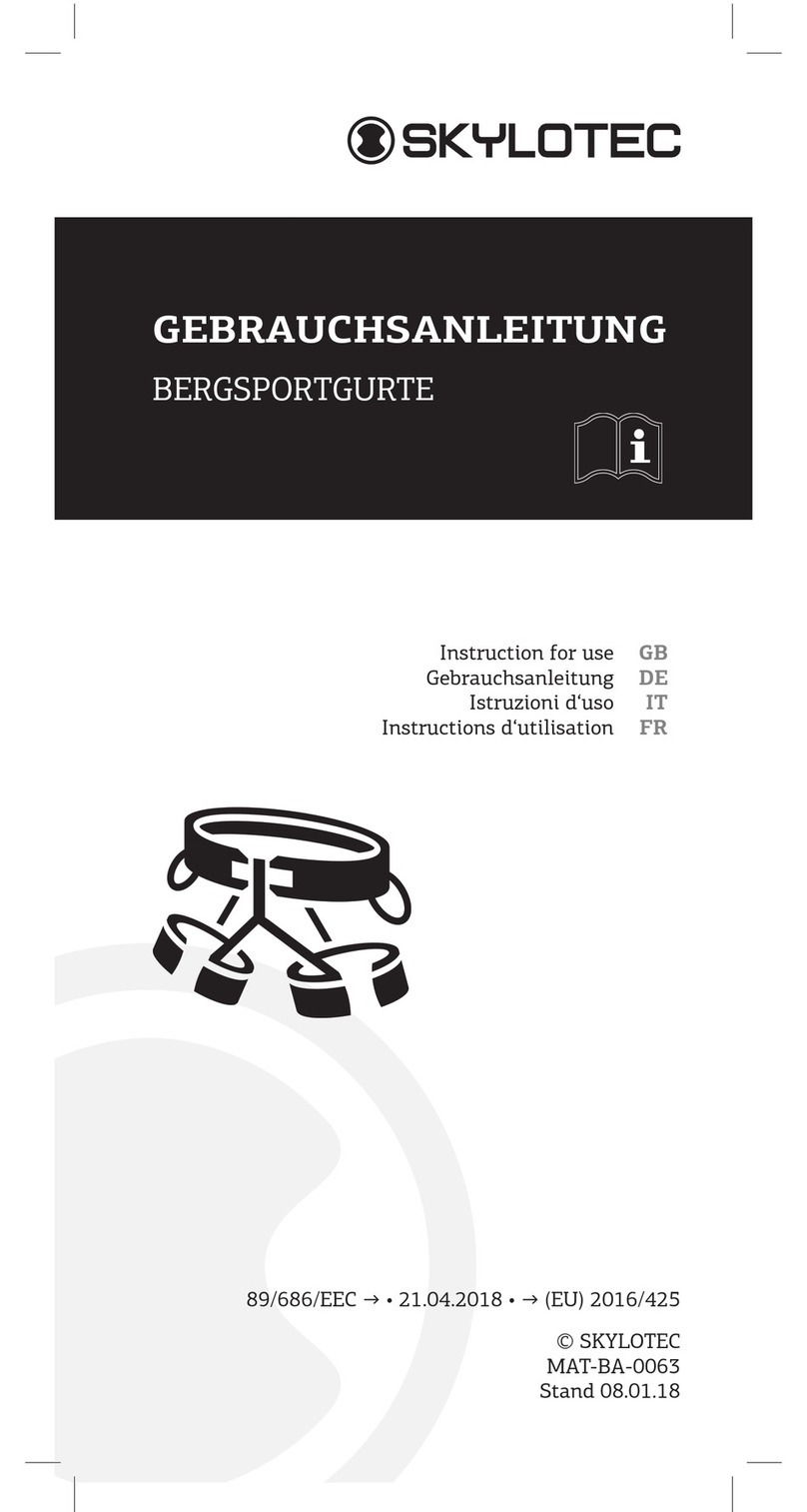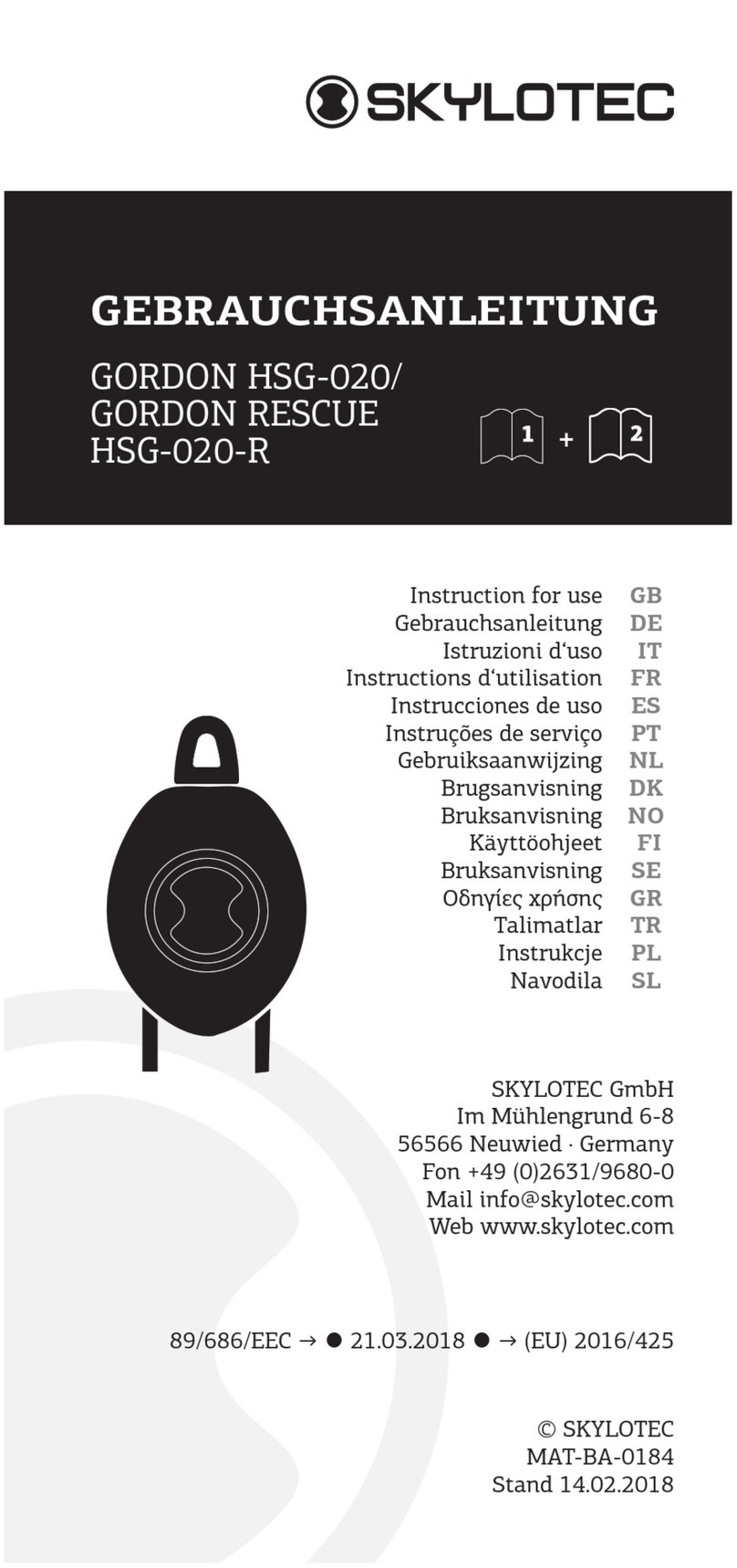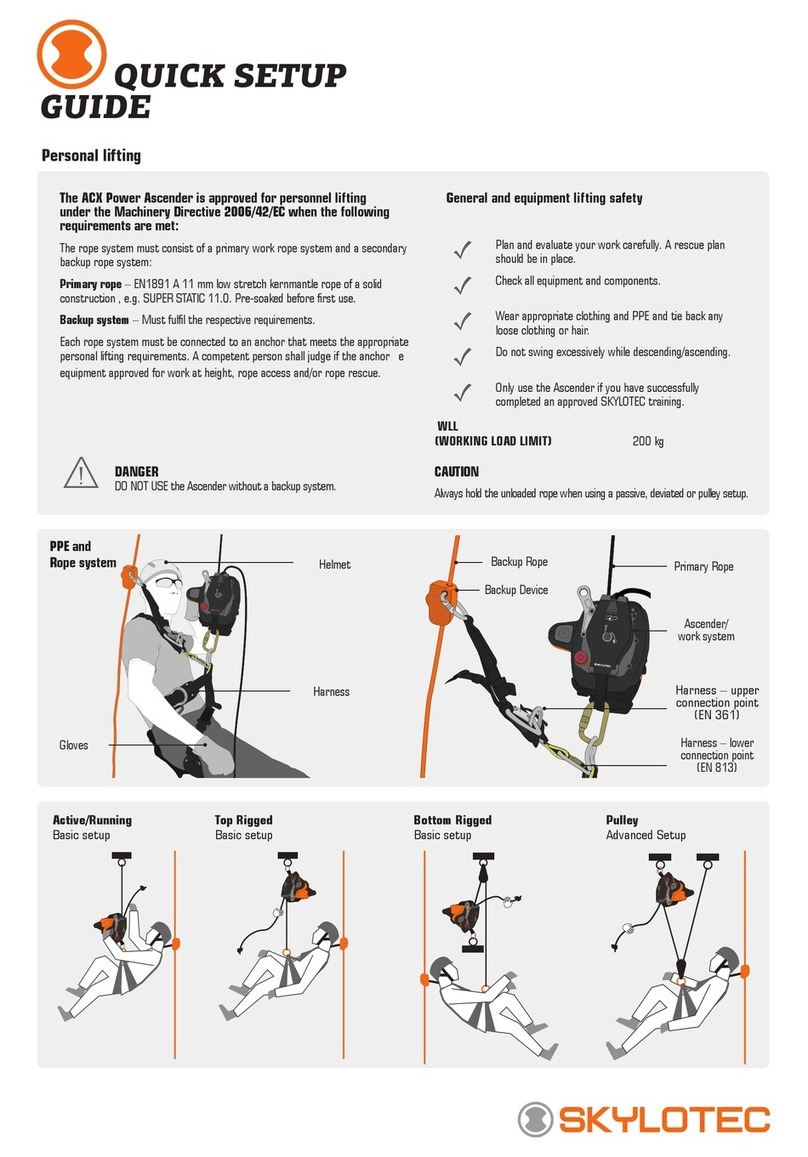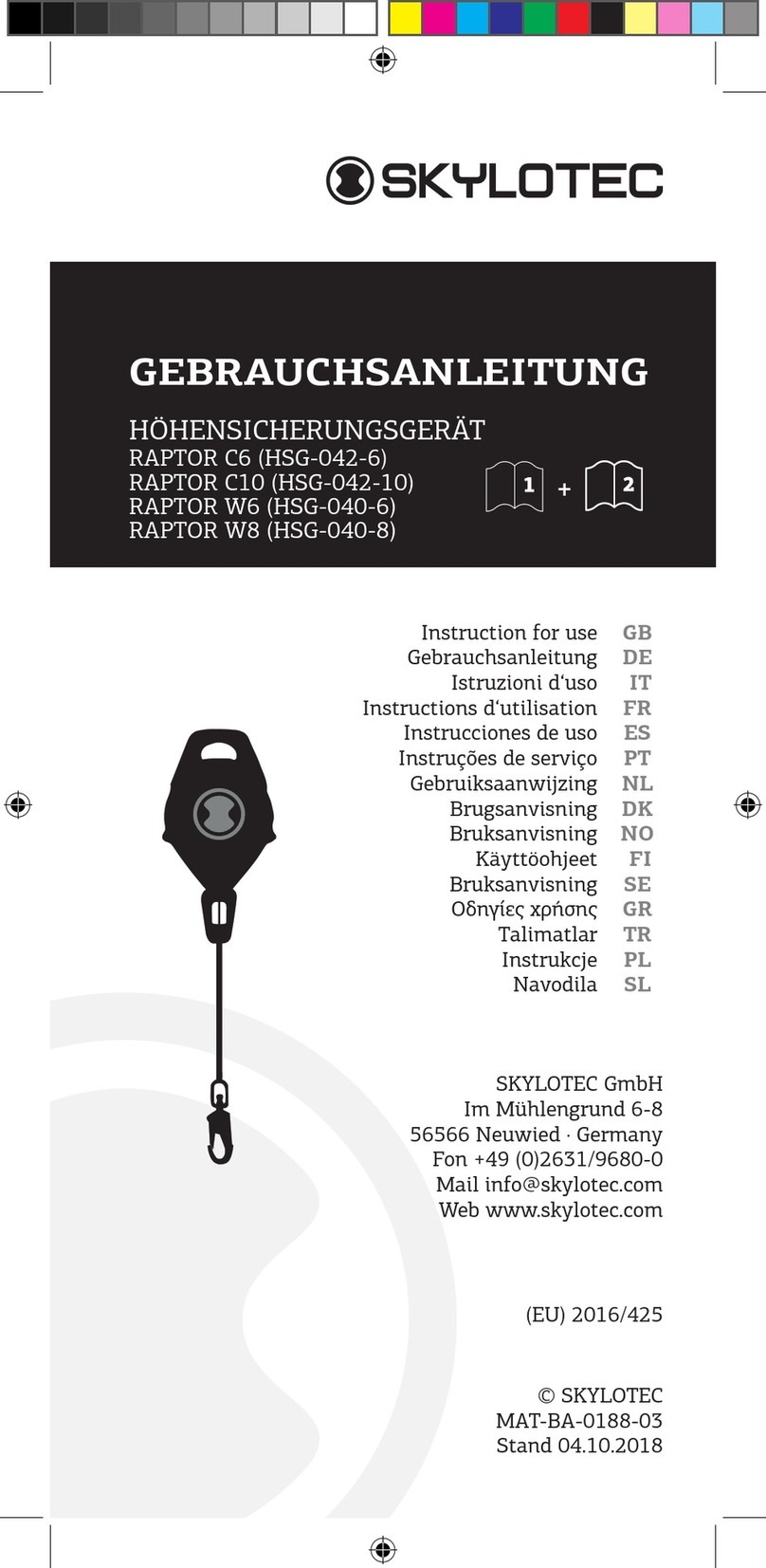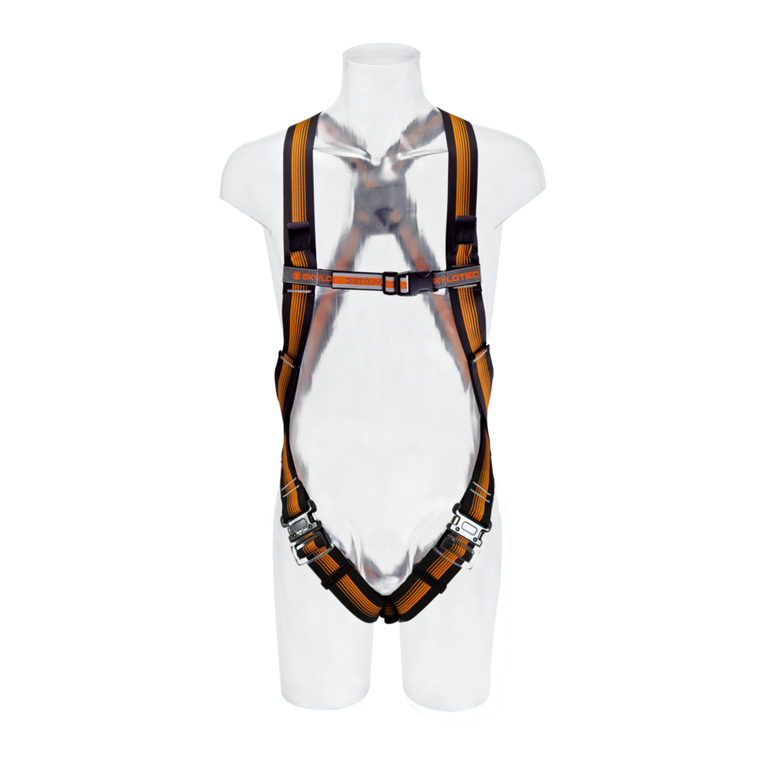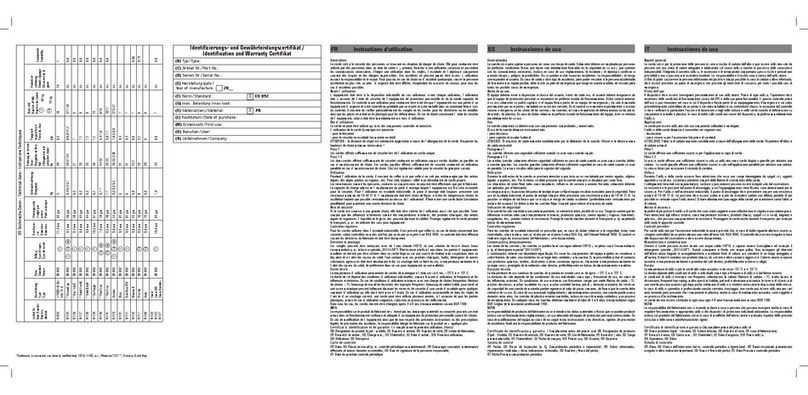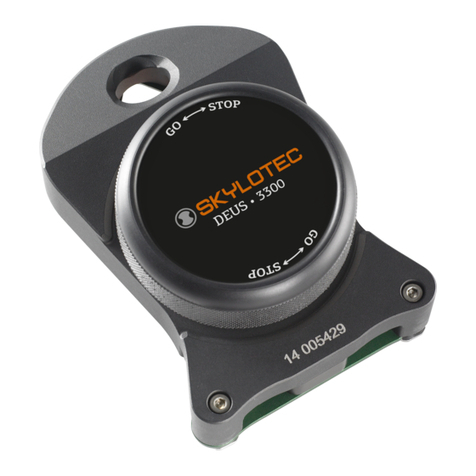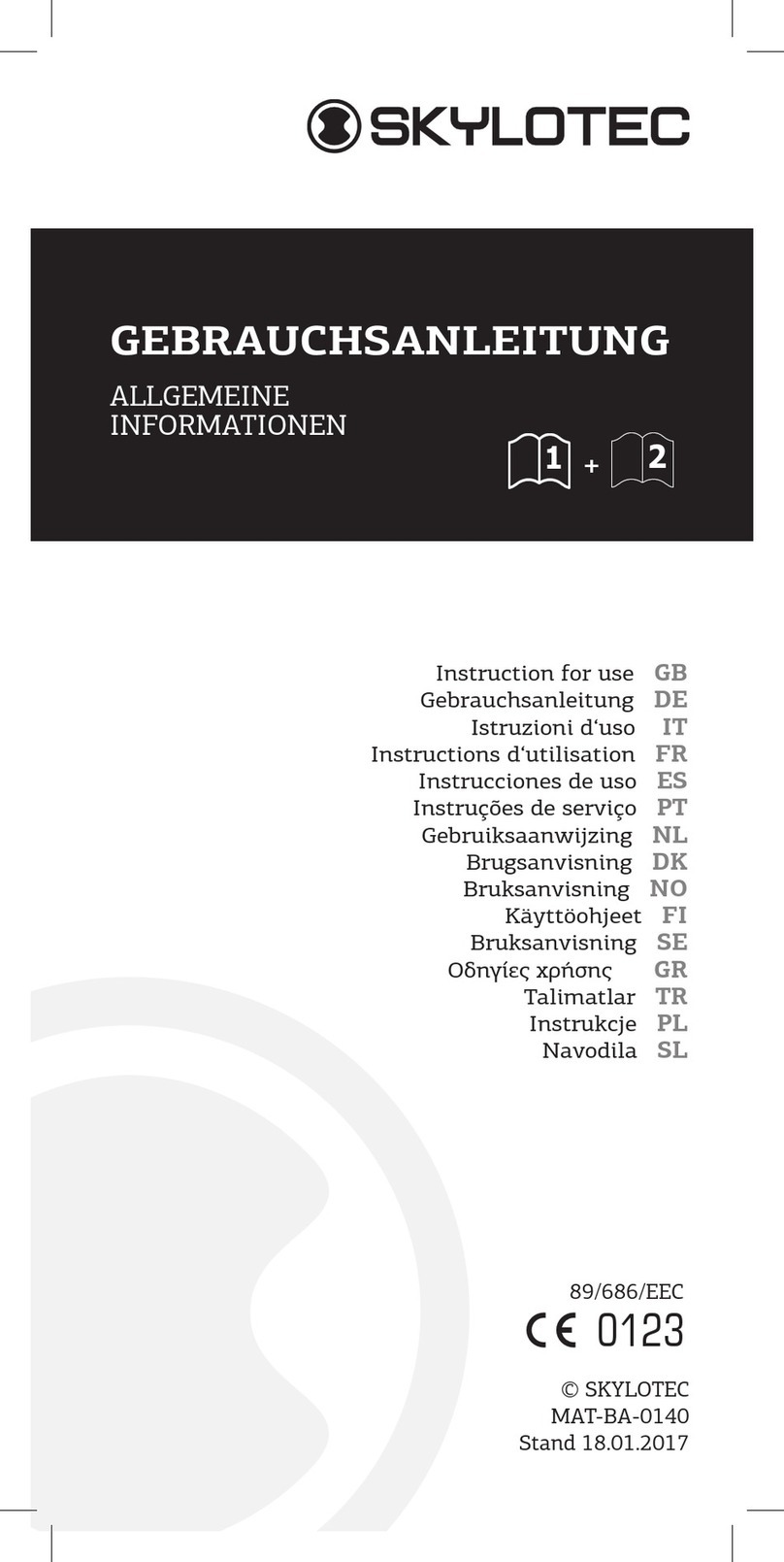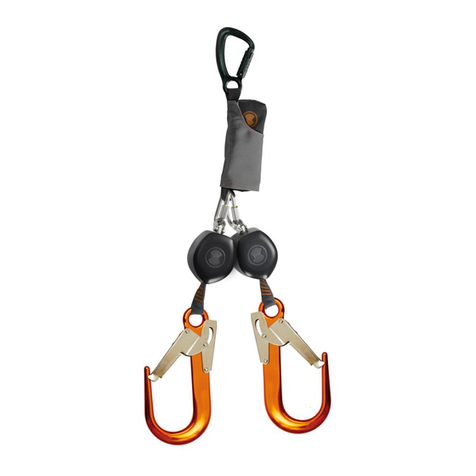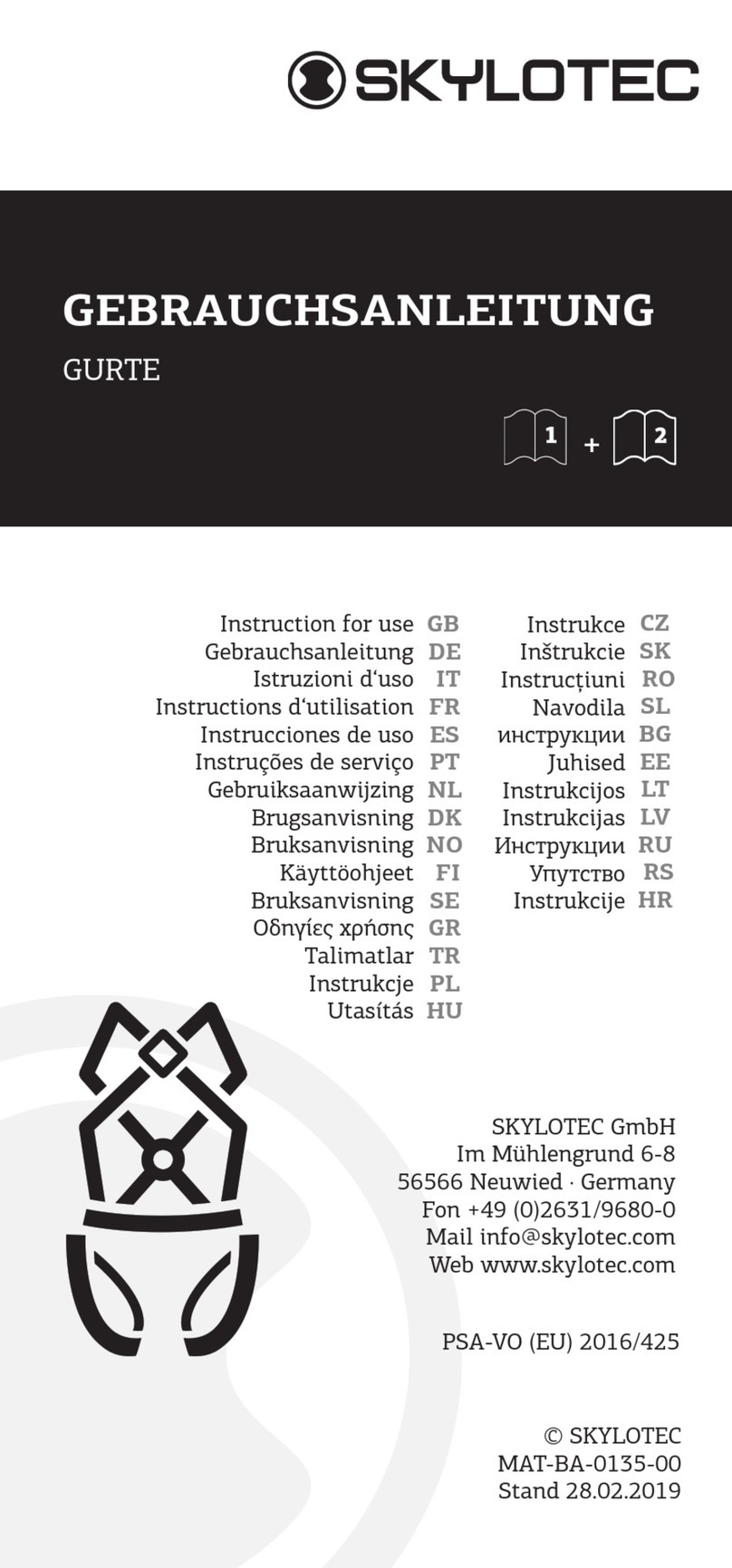
2
GB Instruction for Use 4
Descending and Rescue-Device with lifting function
According to EN 341 Class A and EN 1496, ANSI/ASSE Z359.4-2013, CSA Z259.2.3
DE Gebrauchsanweisung 26
Abseil- und Rettungsgerät mit Zugfunktion
In Übereinstimmung mit EN 341 Klasse A und EN 1496, ANSI/ASSE Z359.4-2013, CSA Z259.2.3
IT Istruzioni per l’uso 48
Dispositivo di discesa e salvataggio con funzione di sollevamento
Ai sensi della direttiva EN 341 classe A ed EN 1496, ANSI/ASSE Z359.4-2013, CSA Z259.2.3
FR Instructions d’utilisation 70
Appareil de descente et de sauvetage avec fonction de levage
Conforme aux normes EN 341 classe A et EN 1496, ANSI/ASSE Z359.4-2013, CSA Z259.2.3
ES Instrucciones de uso 92
Dispositivos de descenso y rescate con función de elevación
Según EN 341 clase A y EN 1496, ANSI/ASSE Z359.4-2013, CSA Z259.2.3
PT Instruções de utilização 114
Dispositivo de Descida e Salvamento com função de elevação
Em conformidade com a norma EN 341 Classe A e EN 1496, ANSI/ASSE Z359.4-2013, CSA Z259.2.3
NL Gebruiksaanwijzing 136
Afdaal- en reddingsapparaat met heffunctie
Volgens EN 341 Klasse A en EN 1496, ANSI/ASSE Z359.4-2013, CSA Z259.2.3
DK Brugsanvisning 158
Nedfirings- og redningsudstyr med løftefunktion
I overensstemmelse med EN 341 Klasse A og EN 1496, ANSI/ASSE Z359.4-2013, CSA Z259.2.3
NO Bruksanvisning 180
Nedstignings- og redningsenhet med løftefunksjon
I samsvar med EN 341 klasse A og EN 1496, ANSI/ASSE Z359.4-2013, CSA Z259.2.3
FI Käyttöohje 202
Laskeutumis- ja pelastautumislaite nostotoiminnolla
EN 341 luokan A- ja EN 1496-, ANSI/ASSE Z359.4-2013-, CSA Z259.2.3 -standardin mukainen.
SE Bruksanvisning 224
Nedfirnings- och räddningsutrustning med lyftfunktion
Följer EN 341 klass A och EN 1496, ANSI/ASSE Z359.4-2013, CSA Z259.2.3
GR 246
Σύμφωνα με το πρότυπο EN 341 Κατηγορία A και EN 1496, ANSI/ASSE Z359.4-2013, CSA Z259.2.3
